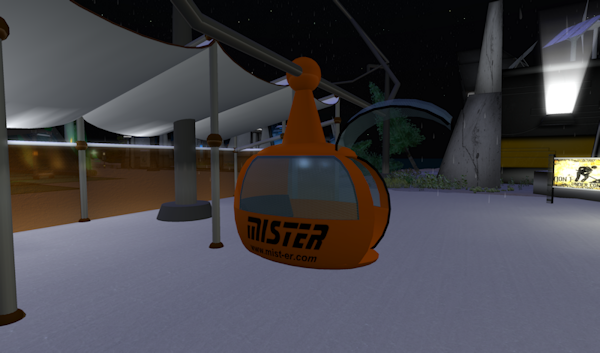As the world searches for an answer to reducing the use of fossil fuels, cities are starting to look to the personal rapid transit (PRT) system as a potential solution. Lately, MISTER, a Polish-based company, has gained increasing notice for their innovative PRT system. MISTER is an acronym for Metropolitan Individual System of Transportation on an Elevated Rail. The design consists of a group of small, light-weight vehicles or cabins that travel on an overhead truss rail and have externally powered electric motors integrated into the vehicle carriage assembly.
The MISTER system is reported to have an advantage over competitors because of the use of the light overhead truss system while other PRTs rely on guide rails and track systems. The overhead guide allows cars to climb at 45-degree angles while keeping the floor of the vehicle level. The steep inclines also reduce the area required on the ground for stops
The system is designed to carry up to 5 passengers who enter a PRT vehicle at designated stops and select their destination using an onboard computer. This programmed stop can also be changed during the trip by the passengers. Opole, a city in Poland, has allocated land for a test track for the MISTER system and is in the process of planning routes throughout the city.
MISTER is only one of many PRT systems in development. More information about PRT systems and other alternative transportation technologies can be found at the Innovative Transportation Technologies site hosted by the University of Washington.
For those interested in viewing and trying out a virtual, 3D representation of the MISTER system, you can visit the Second Life site of the UN Climate Change Conference by clicking here. (YOu will need a free Second Life account and avatar available at the Second Life Website.)





My personal fav is the shweeb people powered monorail. There is a funride version at a place called agroventures near Rotorua in New Zealand. Apparently awesome fun. And way cheaper in every way than gondola style PRT – not that it’s a competition.
http://www.gizmag.com/the-shweeb-human-powered-monorail/9678/
Hugh
Thanks for sharing that – it does look like great fun! Too bad there isn’t one closer in the US. If they tried to develop it for public transit use, I wonder about how they would make it ADA-compliant.
Those look wicked awesome. Personally I’m waiting for Segways to drop to about $1k and I’m in.
No idea what ADA-compliant is but nobody likes regulations getting in the way of awesome. If they ever were to be developed for public transit within an urban context it would never happen in New Zealand. Maybe europe. Fact is it is probably a better solution than any PRT system i’ve seen but don’t people just love throwing technology at problems and over-designing?
The Sweeb just hasn’t got the ‘city of the distant future’ feel about it, it’s just too practical and technologically neutral yet complex in terms of infrastructure hence it will be unlikely to get the kind of support and momentum at the municipal level it needs even if it is cheaper and more environmentally sensible than PRT systems.
Cognitively the Shweeb and any fully automatic gondola style system are similar in terms of disruption to the culture (or embodied language of experience) of personal transport. That, and not cost or practicality, is the major barrier to change. So we turn to misdirection through gadgets and ‘high technology’ to facilitate acceptance of change.
PRT systems are not the best conceivable solution to urban transport issues in my opinion but if they can help and they can be shown to clearly improve the triple bottom line without detracting or overwhelming other explorations into better solutions either financially or otherwise then what the hell?
I forget who said this but “what problem is the electric window the solution to?”.
Oh right accessibility issues got ya. Yes very real design issue there for a Shweeb as it stands and always important in terms of public transport. I retract my first sentence above. (edit!) but not the rest.
Every public use project in the US has to comply with the ADA to ensure everything is accessible. I imagine there might be some way to accommodate those with disabilities in this system.
I agree that we allow ourselves to get too comfortable with the status quo. Transportation really needs some design innovation if we are going to realize any significant cost savings in that industry. If only we could get away from vehicles and having to build the roads for them. Significant resources are going into road building and reconstruction, and I wonder at what point we no longer will have the materials to keep doing this.
Very cool! I wrote a scifi story last year with a similar system, “podtrains,” as a feature of the future. I love this stuff.